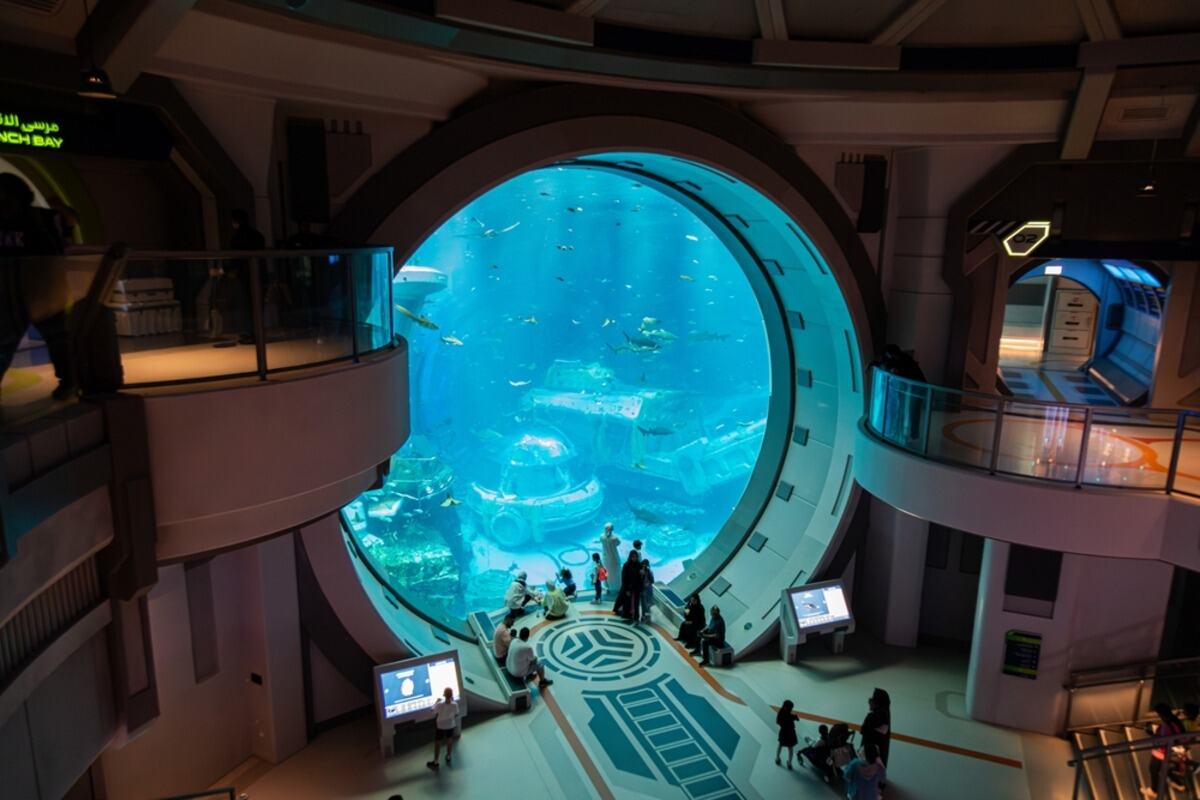Emirates plane crash abu dhabi – Emirates plane crash Abu Dhabi – a chilling thought experiment. This exploration isn’t about a real event, but rather a deep dive into what
-could* happen, examining the intricate web of factors that contribute to air disasters. We’ll look at everything from standard investigation procedures and potential causes, to the UAE’s robust safety regulations and the hypothetical impact on public perception.
Think of this as a comprehensive safety review, using a fictional scenario to illuminate crucial aspects of air travel safety.
We’ll cover the historical context of Emirates in Abu Dhabi, detailing their significant role in the region’s economy. Then we’ll move into the hypothetical crash itself, building a detailed scenario encompassing weather conditions, potential causes, and the immediate aftermath. Finally, we’ll discuss emergency response procedures, technological advancements in aviation safety, and the importance of proactive safety measures.
Emirates Airline’s History and Operations in Abu Dhabi

Emirates Airline, a cornerstone of Abu Dhabi’s economy and a global aviation leader, boasts a rich history intertwined with the emirate’s development. This section details the airline’s growth, its significant milestones, and its substantial contribution to Abu Dhabi’s economic prosperity.
Emirates Airline’s Operational History in Abu Dhabi
Established in 1985, Emirates began operations with just two leased aircraft, rapidly expanding its fleet and network. Its strategic location in Abu Dhabi, coupled with its innovative approach to customer service and route expansion, fueled its phenomenal success. The airline’s commitment to Abu Dhabi as its base has been unwavering, contributing significantly to the emirate’s profile on the global stage.
Timeline of Significant Events

- 1985: Emirates Airline is founded and commences operations.
- 1990s: Rapid expansion of the fleet and route network, establishing a global presence.
- 2000s: Strategic partnerships and alliances are formed, further enhancing Emirates’ reach.
- 2010s – Present: Continued growth, technological advancements, and sustained commitment to Abu Dhabi as its primary hub.
Emirates Airline’s Role in Abu Dhabi’s Economic Development
Emirates has been instrumental in transforming Abu Dhabi into a major global aviation hub. The airline’s operations generate substantial revenue, create numerous jobs, and attract tourism and foreign investment. Its presence has significantly boosted the emirate’s infrastructure development, including the expansion of Abu Dhabi International Airport.
Okay, so you’re looking into the Emirates plane crash in Abu Dhabi? That’s serious stuff. Thinking about disaster response, it makes you wonder about the technology used for surveillance and rescue, which is why advancements like those showcased at the china drone show 2027 are so important. Improved drone tech could significantly aid in future emergency situations, potentially mitigating the impact of events like the Abu Dhabi crash.
Aircraft Accident Investigation Procedures
Investigating aircraft accidents is a complex process involving meticulous data collection and analysis to determine the root cause. International standards and best practices guide these investigations, ensuring thoroughness and transparency.
Standard Accident Investigation Procedures
Investigations typically follow a structured methodology, beginning with securing the accident site, recovering the flight recorders (black boxes), and gathering witness testimonies. This is followed by a detailed examination of the aircraft wreckage, weather data analysis, and review of maintenance records. The final report Artikels the findings and often makes safety recommendations to prevent similar incidents.
Roles and Responsibilities of Involved Agencies
Multiple agencies usually participate, including air accident investigation bodies (like the UAE General Civil Aviation Authority), aircraft manufacturers, and the airline itself. Each agency has specific responsibilities, ranging from site management and data collection to technical analysis and report writing. Collaboration and information sharing are crucial for a comprehensive investigation.
Data Sources Used in Accident Investigations, Emirates plane crash abu dhabi
- Flight recorders (Cockpit Voice Recorder and Flight Data Recorder): Capture crucial flight data and cockpit conversations.
- Witness testimonies: Eyewitness accounts can provide valuable context and information.
- Aircraft wreckage examination: Provides insights into structural failure and impact forces.
- Maintenance records: Reveal the aircraft’s history and any potential mechanical issues.
- Weather data: Determines the impact of weather conditions on the flight.
Potential Causes of Plane Crashes
Aircraft accidents are multifaceted events, often stemming from a combination of factors. Human error, mechanical failures, and environmental conditions all play a role.
Common Factors Contributing to Aircraft Accidents
These include pilot error (loss of control, poor decision-making), mechanical failures (engine malfunction, structural issues), adverse weather conditions (severe turbulence, low visibility), and air traffic control errors.
Role of Human Error in Aviation Accidents
Human error remains a significant contributor to aviation accidents. This can range from pilot fatigue and inadequate training to communication breakdowns within the cockpit or between the cockpit and air traffic control.
Impact of Mechanical Failures on Aircraft Safety
Mechanical failures can range from minor malfunctions to catastrophic events. Regular maintenance and inspections are vital to mitigate the risk of such failures. Redundancy systems are designed to ensure that if one system fails, a backup system is available.
Okay, so you’re looking into the Emirates plane crash in Abu Dhabi? That’s serious stuff. It’s interesting to compare real-life tragedies to fictional ones, like the intense survival scenarios shown in the wildly popular South Korean series, check out if there’s any truth behind the show by visiting squid game histoire vraie to see what’s been said about its basis in reality.
Then, consider how the psychological impact on survivors of the Emirates crash might compare to the games’ pressure. Both situations highlight the fragility of life and the human response to extreme pressure.
Types of Aircraft Accidents
Accidents can be categorized into various types, including controlled flight into terrain (CFIT), loss of control in flight (LOC-I), and mid-air collisions. Each type has distinct characteristics and contributing factors.
Safety Regulations and Procedures in the UAE
The UAE maintains stringent aviation safety regulations, adhering to and often exceeding international standards. Emirates Airline follows rigorous safety protocols to ensure passenger and crew safety.
Aviation Safety Regulations and Standards in the UAE
The UAE’s General Civil Aviation Authority (GCAA) sets and enforces safety regulations, ensuring compliance with international standards set by organizations like the International Civil Aviation Organization (ICAO). These regulations cover various aspects, including aircraft maintenance, pilot training, and air traffic control.
Safety Procedures Followed by Emirates Airline
Emirates adheres to a comprehensive safety management system, encompassing rigorous training programs for pilots and crew, meticulous aircraft maintenance, and adherence to stringent operational procedures. The airline continuously invests in safety technologies and upgrades its safety protocols.
Comparison with International Standards

The UAE’s aviation safety standards are generally considered to be on par with or exceeding international best practices. The GCAA’s rigorous oversight and Emirates’ commitment to safety contribute to this high standard.
Impact on Air Travel and Public Perception
A hypothetical Emirates plane crash in Abu Dhabi would have significant short-term and long-term impacts on air travel and public perception.
Immediate and Long-Term Impact on Air Travel
Immediately following a crash, there would likely be disruptions to air travel to and from Abu Dhabi. Passenger confidence might decrease temporarily, potentially affecting bookings. In the long term, the impact could depend on the investigation’s findings and the measures taken to improve safety.
Effect on Public Perception
Public perception of Emirates Airline and air travel in general could be negatively affected. A swift and transparent response, emphasizing safety improvements, would be crucial in mitigating this impact. Effective communication and empathy towards victims and their families are essential.
Public Relations Strategy
A comprehensive public relations strategy would involve immediate communication with passengers and families, transparent investigation updates, and a clear demonstration of the airline’s commitment to safety improvements. This might include enhanced safety measures, improved communication protocols, and a renewed emphasis on passenger well-being.
Emergency Response and Procedures: Emirates Plane Crash Abu Dhabi
Abu Dhabi International Airport has well-defined emergency response procedures involving various agencies to ensure a coordinated and efficient response in the event of an aircraft accident.
Emergency Response Procedures at Abu Dhabi International Airport
The airport’s emergency response plan Artikels roles and responsibilities for different agencies, including fire and rescue services, medical teams, and law enforcement. The plan covers procedures for evacuating passengers, securing the accident site, and providing medical assistance.
Roles of Various Emergency Services
Fire and rescue services focus on extinguishing fires, rescuing survivors, and securing the area. Medical teams provide on-site medical care and transport injured individuals to hospitals. Law enforcement secures the scene, manages traffic, and investigates the incident.
Step-by-Step Emergency Response Process
| Step | Action | Agency Involved | Timeframe |
|---|---|---|---|
| 1 | Initial Alert and Notification | Airport Control Tower, Emergency Services | Immediate |
| 2 | Emergency Response Teams Deployment | Fire & Rescue, Medical Services, Law Enforcement | Within minutes |
| 3 | Scene Securing and Perimeter Establishment | Law Enforcement, Airport Security | Within minutes |
| 4 | Rescue and Extrication of Survivors | Fire & Rescue, Medical Services | Ongoing |
| 5 | Medical Treatment and Transportation | Medical Services, Ambulance | Ongoing |
| 6 | Investigation Commencement | GCAA, Law Enforcement | Following rescue operations |
Illustrative Scenario: A Hypothetical Crash
Imagine an Emirates Airbus A380, flight EK145, departing Abu Dhabi International Airport on a sunny afternoon. Unexpected severe turbulence, possibly associated with a previously unpredicted microburst, causes a sudden and drastic loss of altitude. The aircraft, despite the pilot’s attempts at recovery, crashes several kilometers short of its intended flight path, impacting a sparsely populated desert area.
Scene Immediately Following the Crash
The impact causes significant damage to the aircraft, resulting in a large debris field. Emergency response teams rapidly arrive on the scene, utilizing specialized equipment to access survivors trapped within the wreckage. The scale of the damage is substantial, requiring a coordinated effort to manage the rescue and recovery operations. The immediate focus is on locating and extracting survivors, providing immediate medical attention, and securing the area.
Emotional and Psychological Impact
The crash has a profound emotional and psychological impact on numerous individuals. Survivors experience trauma, grief, and loss. Families of passengers and crew grapple with uncertainty and anguish. The wider community experiences shock and sadness, affecting collective morale and trust in air travel. Grief counseling and support services become essential in the aftermath of the tragedy.
Technological Advancements and Safety Features
Technological advancements have significantly enhanced aircraft safety. Modern aircraft, including those operated by Emirates, incorporate numerous safety features to mitigate risks.
Role of Technological Advancements
Technological advancements have improved various aspects of flight safety, including navigation systems, flight control systems, and collision avoidance systems. These systems enhance situational awareness, improve flight precision, and minimize the risk of accidents.
Safety Features in Modern Aircraft
- Advanced flight control systems: Provide enhanced stability and maneuverability.
- Sophisticated navigation systems: Ensure precise flight paths and reduce the risk of spatial disorientation.
- Collision avoidance systems (TCAS): Warn pilots of potential collisions with other aircraft.
- Ground proximity warning systems (GPWS): Alert pilots of potential terrain collisions.
- Enhanced flight data recorders (FDR): Provide more comprehensive flight data for accident investigations.
Comparison of Older and Newer Aircraft Safety Features
Newer aircraft models generally incorporate more advanced safety features and systems compared to older models. These improvements often reflect lessons learned from past accidents and advancements in aviation technology. Regular upgrades and modifications of older aircraft aim to incorporate many of these advancements.
Concluding Remarks
Ultimately, exploring a hypothetical Emirates plane crash in Abu Dhabi allows us to learn valuable lessons about aviation safety without the tragic reality. By examining the potential causes, investigating procedures, and emergency responses, we can better understand the complex interplay of factors affecting air travel safety. This analysis underscores the importance of continuous improvement in aviation technology, stringent safety regulations, and thorough emergency preparedness.
It’s a reminder that while air travel is remarkably safe, vigilance and proactive measures are crucial to maintaining that safety.
Q&A
What types of data are used in aircraft accident investigations?
Flight recorders (black boxes), cockpit voice recorders, air traffic control recordings, witness testimonies, maintenance records, weather data, and aircraft design specifications.
Thinking about the Emirates plane crash in Abu Dhabi? Major air accidents are thankfully rare, but investigating them helps improve aviation safety. For instance, understanding the factors involved in a similar incident, like the fullerton plane crash , provides valuable comparative data. This helps experts learn from past events to enhance procedures and prevent future tragedies, making air travel safer for everyone, including those flying Emirates.
How does the UAE compare to international aviation safety standards?
The UAE generally adheres to and often exceeds international aviation safety standards set by organizations like ICAO (International Civil Aviation Organization).
What is the role of human error in plane crashes?
Human error, encompassing pilot error, air traffic control mistakes, and maintenance oversight, is a significant factor in many aviation accidents.
What are some common causes of mechanical failures in aircraft?
Mechanical failures can stem from various sources, including manufacturing defects, inadequate maintenance, wear and tear, and unforeseen environmental factors.
